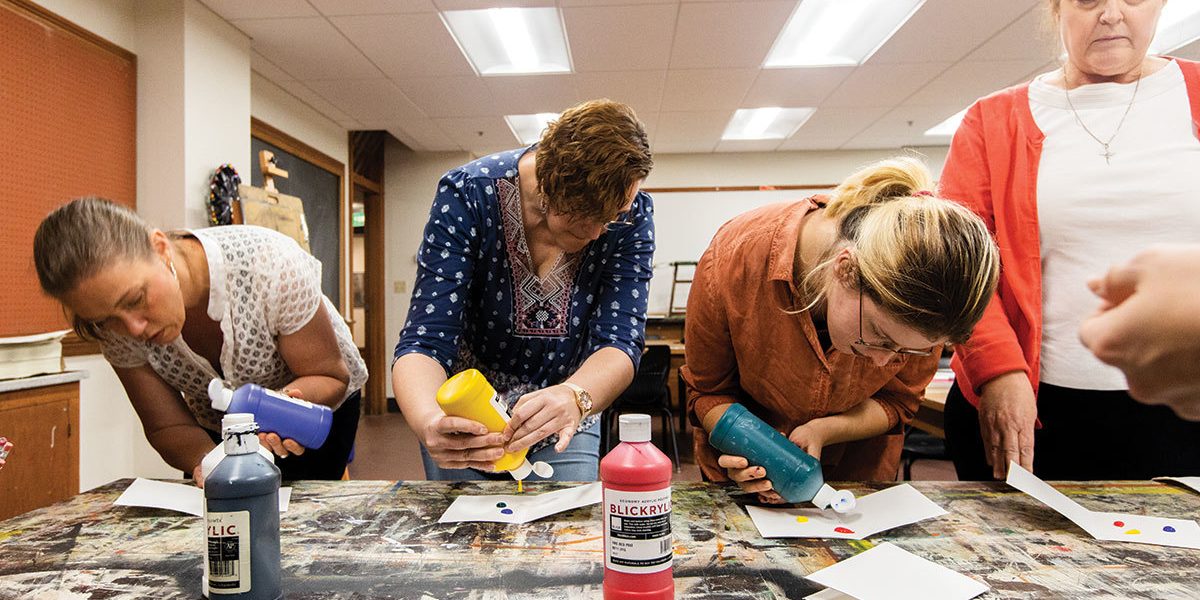Arts & Culture
The Art of Healing
Notre Dame of Maryland University launches the state’s first art therapy master’s program.
A small group of art therapy students at Notre Dame of Maryland University crowds around a table to make their own inkblots—dabbing paint onto paper and then folding and unfolding the sheets. They turn the pages in all directions and squint to see what the inkblots reveal to them, foregoing deep interpretation for now. With plenty of good-natured laughter, the group shares the free associations they see: a flower, a couple dancing, a chicken confronting an evil bunny.
This exercise is art therapy—a therapeutic process through which an individual uses art to express feelings that might not come to the surface with words alone—at its finest. This fall, NDMU started the first run of classes for the school’s MA in Art Therapy, the only program of its kind in Maryland. “It can help to externalize trauma with art,” says instructor Julia Andersen to her History and Theory of Art Therapy class. “Art holds the memory so that you don’t have to.”
Unlike most states, Maryland distinguishes art therapy as a separate clinical profession instead of packaging it within a degree or license in counseling. And yet, up until now, there wasn’t a graduate-level art therapy program here. Students who earned a bachelor’s degree in art therapy from NDMU had to go out of state to continue their studies if they wanted to become licensed art therapists. NDMU’s brand-new master’s program was about two years in the making, and practicing art therapists teach all of the program’s courses. “We’re art therapists, artists, and teachers all at the same time,” says Cathy Goucher, director of the NDMU program.
The program’s five students study form, aesthetics, and medium, but also dive into the universal symbolism in Carl Jung’s The Red Book and the theories of art therapy pioneer Edith Kramer. Upon graduation from the program, students receive a graduate license and can apply to become a Licensed Clinical Professional Art Therapist (LCPAT) after 3,000 hours of supervised experience.
The students grapple with questions such as, “How important is the finished product? Is it more important than the process?” In Andersen’s History and Theory of Art Therapy, debates ensue as students hold up drawings in their sketchbooks and share how they’ve processed their recent experiences through art. And because the art is instinctive and cathartic, it’s not always pretty. “I’m a professional designer—and look at this!” jokes one of the students, Melanie Sanderson, holding up her sketchbook. “I could never show my clients this. But it felt good to do.”
